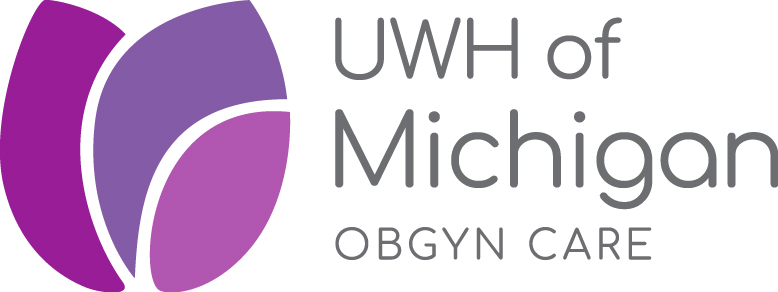Five Steps to Complete a Breast Self-Exam During Breast Cancer Awareness Month
Every October, pink ribbons appear on storefronts, social media profiles, and community events. Breast Cancer Awareness Month is more than just a symbol; it’s a call to action. Early detection of breast cancer saves lives, and one of the most effective tools women have at home is the breast self-exam. It takes just a few minutes each month, yet it can make a powerful difference in recognizing potential warning signs early.
At Walnut Lake OBGYN & Wellness, we’ve put together a guide that outlines five simple steps to complete a breast self-exam. We hope it helps to empower women in West Bloomfield, MI, and beyond to feel more confident about their breast health and be proactive in the fight against breast cancer.
Why Breast Self-Exams Matter
Breast cancer is the most commonly diagnosed cancer in women worldwide. While medical screenings like mammograms are essential, self-awareness plays an equally important role. A breast self-exam helps women become familiar with how their breasts normally look and feel, making it easier to notice changes that may signal early detection of breast cancer.
According to the National Breast Cancer Foundation, 1 in 8 women in the U.S. will develop breast cancer in her lifetime. By performing a self-exam once a month, women give themselves the opportunity to spot potential irregularities sooner and seek medical guidance promptly.
When to Perform a Breast Self-Exam
The best time to perform a self-exam is a few days after your menstrual period ends, when breasts are least likely to be swollen or tender. For women who are no longer menstruating, choosing a consistent date each month (such as the first day of the month) is a helpful way to stay on track.
Consistency is key. Performing your exam monthly creates a baseline for comparison, so you’ll quickly notice if something feels unusual.
The Five Steps to Complete a Breast Self-Exam
Here’s a clear, step-by-step guide to performing a breast self-exam.
Step 1: Begin with a Visual Check in the Mirror
Stand topless in front of a mirror with your arms relaxed at your sides. Look for any visible changes, including:
- Unusual swelling or asymmetry
- Changes in breast size or shape
- Visible dimpling or puckering of the skin
- Inversion or changes in the nipples
- Redness, rash, or visible lumps
Then, raise your arms overhead and repeat the visual check. Shifts in shape or contour may be easier to spot in this position.
Step 2: Feel for Changes While Standing
While standing, use the pads of your fingers to press gently but firmly around each breast. Move in small circular motions, covering the entire breast area, from the collarbone down to the top of the abdomen and from the armpit to the cleavage.
Step 3: Perform the Exam Lying Down
Lie flat on your back with a pillow under your right shoulder and your right arm behind your head. Using your left hand, use circular motions to check the right breast. Switch sides and repeat the process for the left breast.
This position spreads the breast tissue more evenly across the chest wall, making it easier to detect lumps or thickened areas.
Inspect in the Shower
Many women find it easiest to perform part of the exam while in the shower, as wet skin allows fingers to glide more smoothly. Using the pads of your fingers, check each breast and underarm in circular motions, applying light, medium, and firm pressure to feel all layers of tissue.
Step 5: Check the Underarm Area
Finally, gently feel the underarm area with the same circular motion. Breast tissue extends into this region, and it’s important to include it in your self-exam. Pay attention to any swelling or unusual firmness that feels different from your normal baseline.
What to Look Out For
Not every lump or change means cancer, but it’s important to know the signs that require medical attention. If you notice any of the following, schedule an appointment with your healthcare provider:
- A lump or thickened area that feels different from surrounding tissue
- Persistent breast pain not linked to your menstrual cycle
- Discharge from the nipple (especially if bloody)
- Changes in skin texture, such as dimpling or thickening
- Sudden changes in size, shape, or symmetry
Early detection of breast cancer significantly increases the effectiveness of treatment. Even if you’re unsure about what you feel, it’s always best to have changes evaluated by a medical professional.
The Role of Self-Exams in Early Detection of Breast Cancer
Breast self-exams are not a substitute for mammograms or professional clinical exams, but they are a vital addition to your breast health routine. Think of them as part of a layered defense against breast cancer.
Self-exams help you become aware of your body and spot changes early. Clinical exams allow a physician to perform a thorough check-up during your annual visit. Mammograms provide detailed imaging to detect issues that may not be felt by touch. Together, these approaches maximize the chances of detecting breast cancer early, when treatment is most effective.
Breast Cancer Awareness Month: A Reminder to Prioritize Your Health
October serves as a national reminder for women everywhere to take charge of their breast health. By making breast self-exams a regular practice, you’re not only honoring the mission of Breast Cancer Awareness Month; you’re investing in your long-term health and peace of mind.
Take the Next Step with Walnut Lake OBGYN & Wellness
Our team at Walnut Lake OBGYN & Wellness is passionate about women’s health and committed to supporting you every step of the way. Whether you need guidance on performing a breast self-exam, a professional clinical breast exam, or scheduling your mammogram, we are here to provide compassionate, expert care.
Contact us today to schedule an appointment and take proactive steps toward protecting your health.

